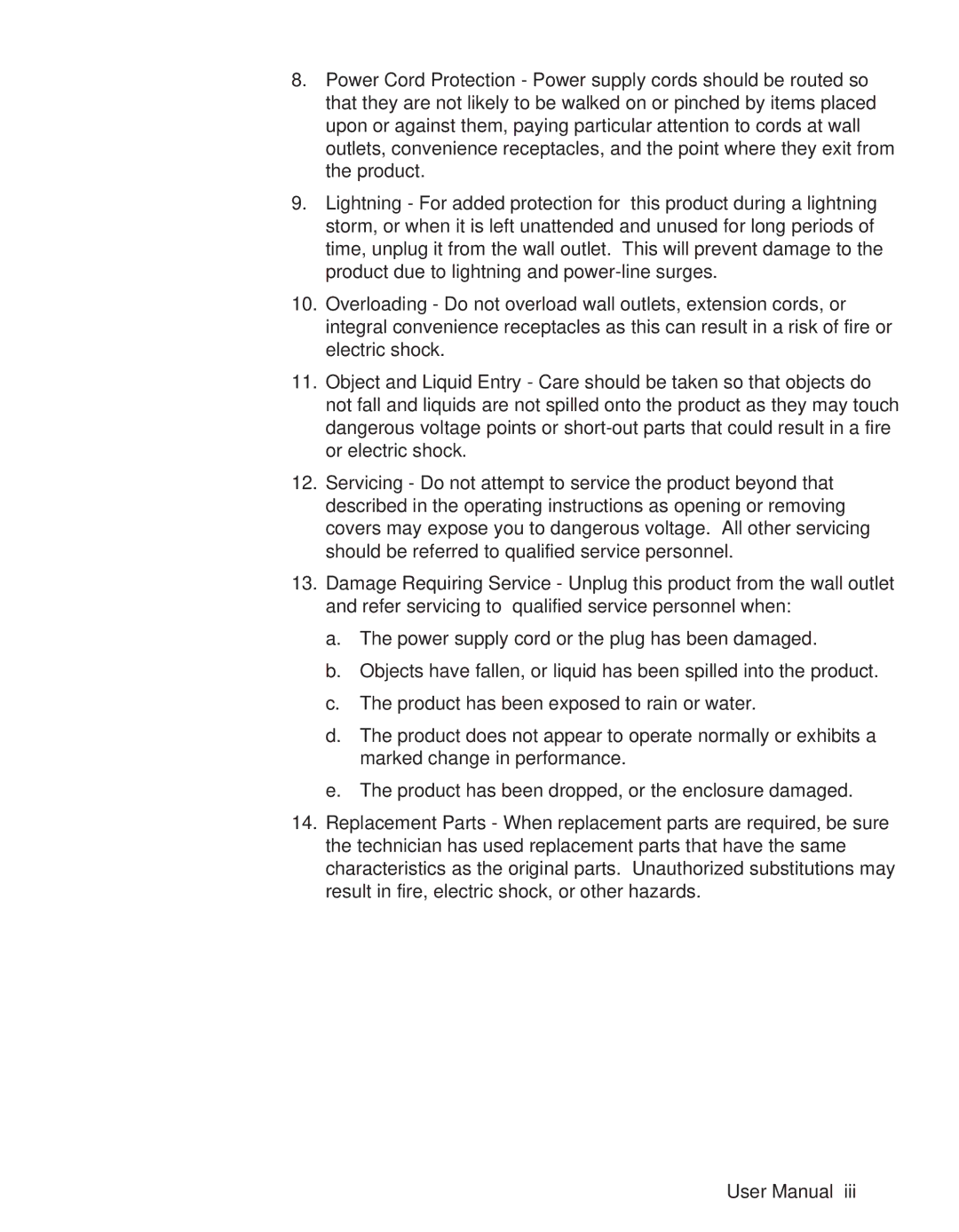8.Power Cord Protection - Power supply cords should be routed so that they are not likely to be walked on or pinched by items placed upon or against them, paying particular attention to cords at wall outlets, convenience receptacles, and the point where they exit from the product.
9.Lightning - For added protection for this product during a lightning storm, or when it is left unattended and unused for long periods of time, unplug it from the wall outlet. This will prevent damage to the product due to lightning and
10.Overloading - Do not overload wall outlets, extension cords, or integral convenience receptacles as this can result in a risk of fire or electric shock.
11.Object and Liquid Entry - Care should be taken so that objects do not fall and liquids are not spilled onto the product as they may touch dangerous voltage points or
12.Servicing - Do not attempt to service the product beyond that described in the operating instructions as opening or removing covers may expose you to dangerous voltage. All other servicing should be referred to qualified service personnel.
13.Damage Requiring Service - Unplug this product from the wall outlet and refer servicing to qualified service personnel when:
a.The power supply cord or the plug has been damaged.
b.Objects have fallen, or liquid has been spilled into the product.
c.The product has been exposed to rain or water.
d.The product does not appear to operate normally or exhibits a marked change in performance.
e.The product has been dropped, or the enclosure damaged.
14.Replacement Parts - When replacement parts are required, be sure the technician has used replacement parts that have the same characteristics as the original parts. Unauthorized substitutions may result in fire, electric shock, or other hazards.
User Manual iii
